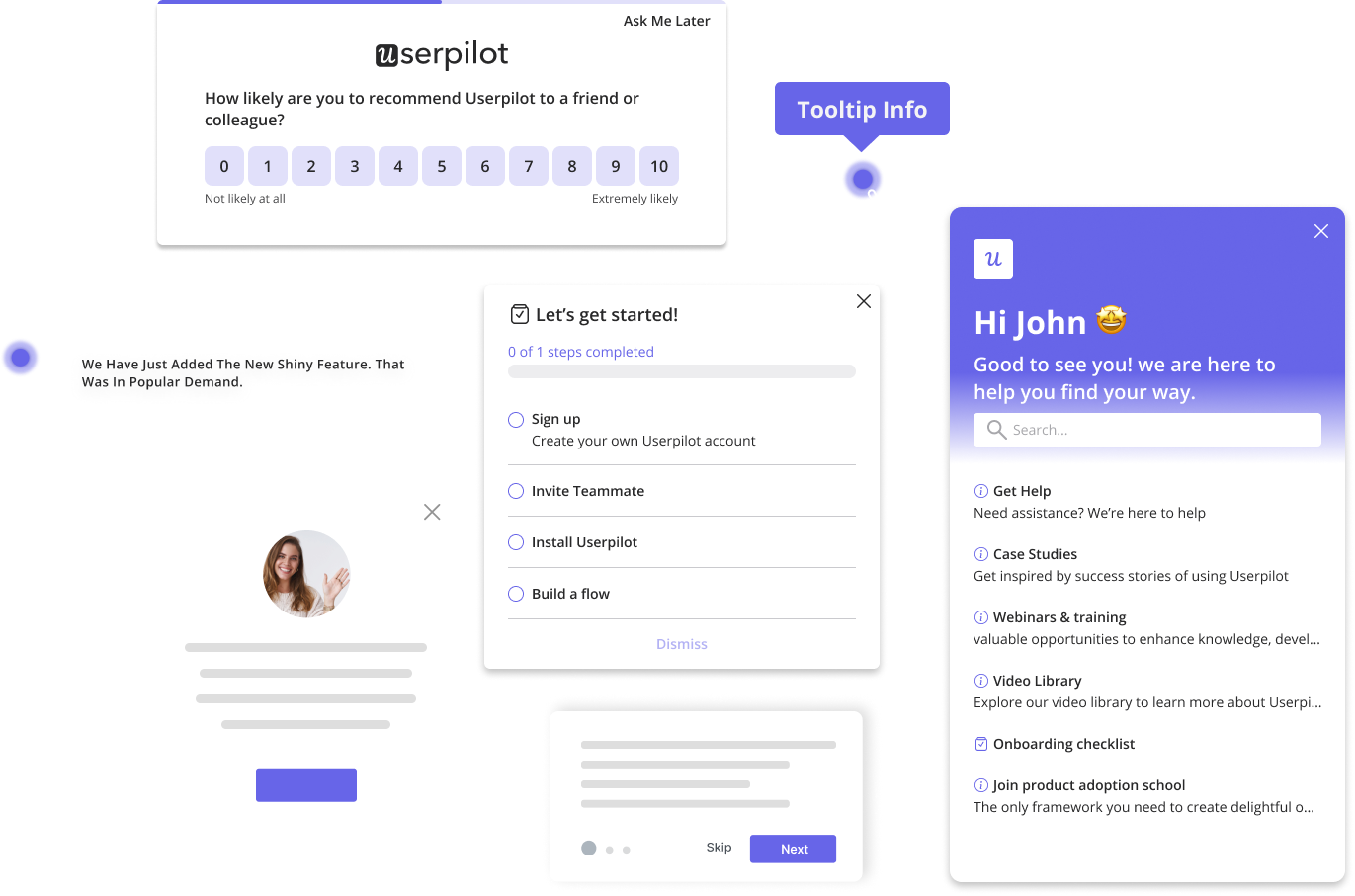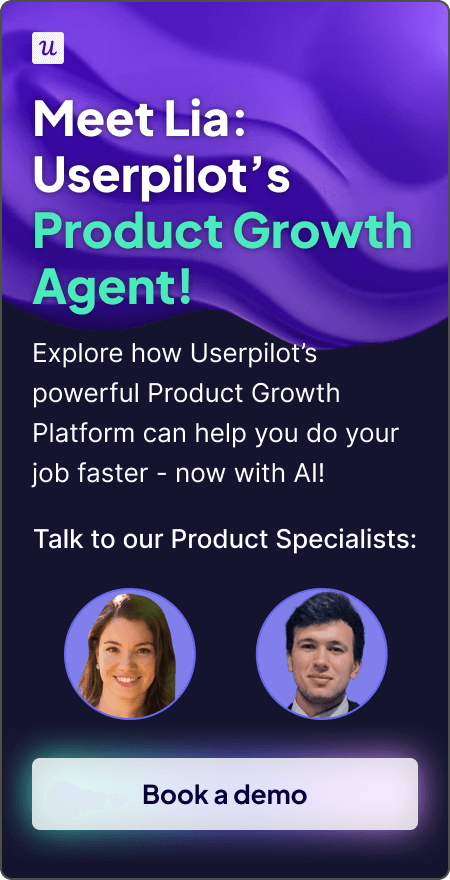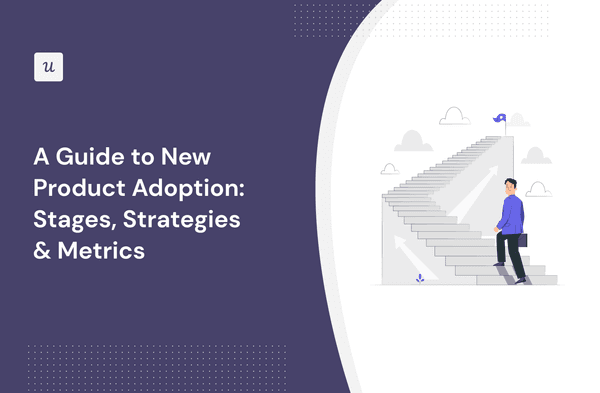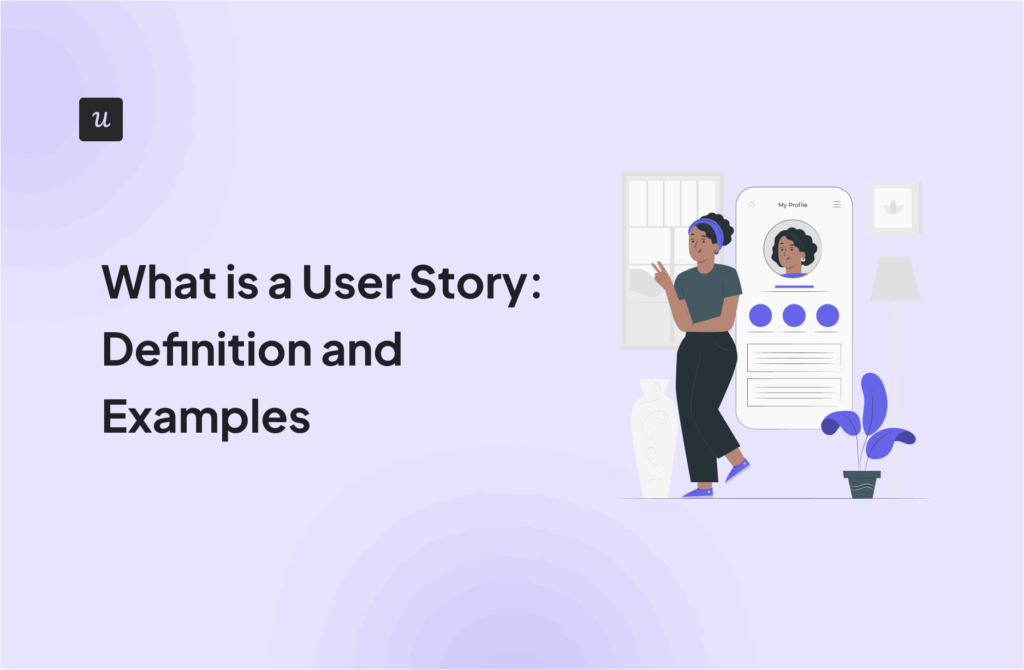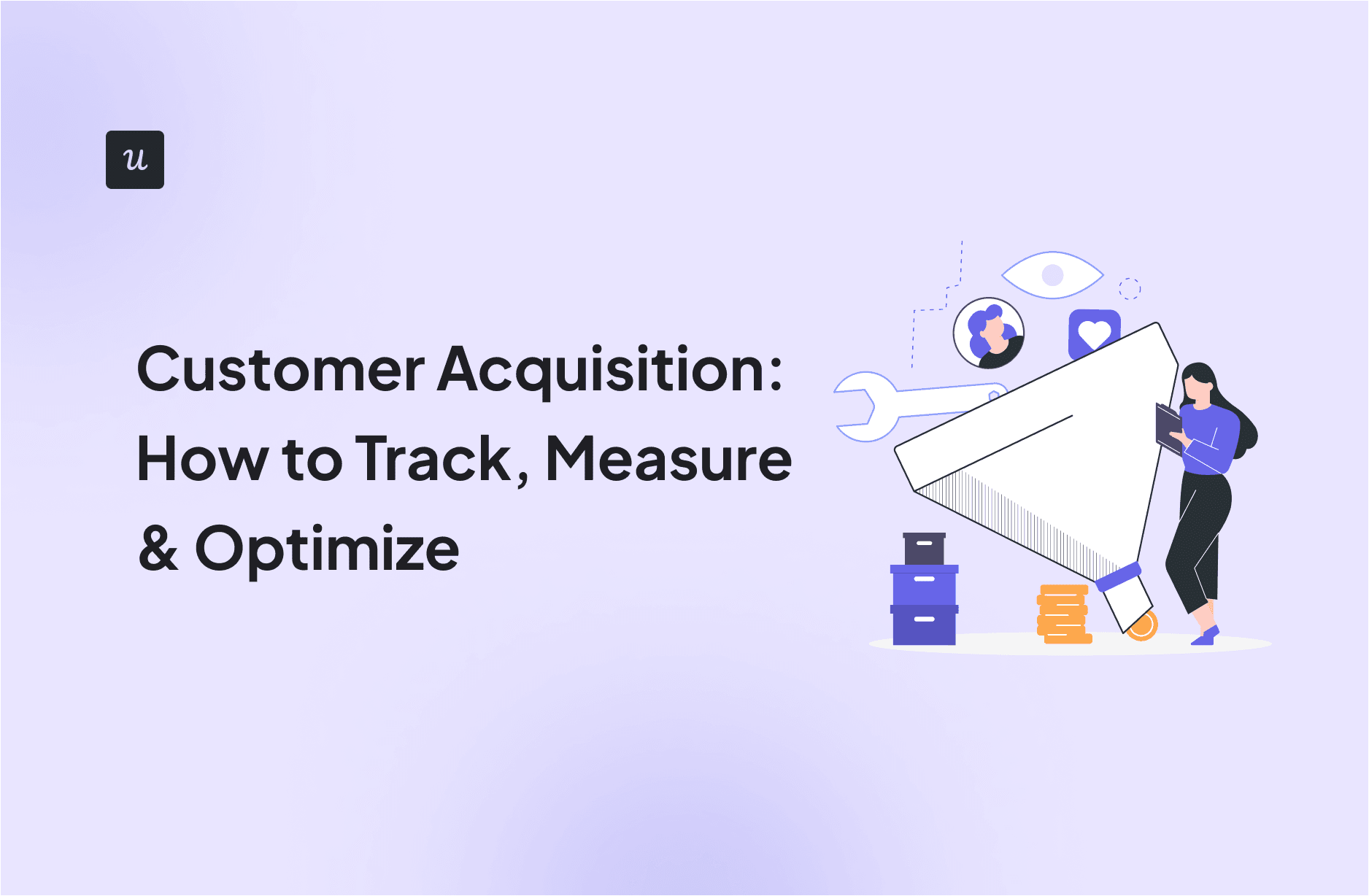
High customer acquisition costs eat into your budget and profits, and as a product manager, this remains one of the biggest concerns. You get several new customers acquired, but most don’t stick around for long. They drop off before they even get a taste of your product’s value.
What if you could guide users through their customer journey and manage your product more effectively? In this post, I’ll help you discover exactly that.
Try Userpilot Now
See Why 1,000+ Teams Choose Userpilot
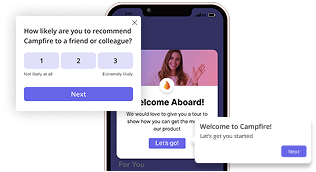
What is customer acquisition, from a PLG perspective?
At its core, customer acquisition is the sum of all activities a business does to attract and convert new users into paying customers. For a product-led growth (PLG) company, this isn’t just about marketing and sales; it’s deeply tied to the product experience itself.
We focus on showing value early and often, letting the product do much of the heavy lifting in attracting and converting users. This means every step by a potential customer, from first hearing about us to becoming an active, paying user, is part of our customer acquisition process.
Once our customers start seeing value in our product, they often share their experience as reviews. Such experiences coming from happy customers are classic examples of word-of-mouth marketing. We showcase our customer reviews to amplify our brand awareness, organic reach, and naturally acquire customers.
All our marketing efforts won’t mean anything if we don’t track the right KPIs. Monitoring these metrics helps us pinpoint effective strategies, cut waste, and focus our resources on what truly drives results.
The PLG customer acquisition channel
The best customer acquisition strategy is placing customer pain points at the center. Then, focus your marketing efforts on demonstrating how your product can address those pain points. That’s a product-led, pain-point-focused acquisition strategy in a nutshell.
Don’t aim to just push people down a pipeline; focus on providing enough value that they naturally move forward, almost pulling themselves through.
My team and I visualize this as users move through distinct phases. Attracting strangers to become visitors, turning those visitors into leads, converting leads into activated users who experience the product’s value, and finally, making them loyal customers.
This full journey, often called the customer lifecycle, helps us understand how our product guides users at every step.
When mapping this journey, we pay close attention to customer journey touchpoints. These touchpoints are every interaction a user has with our brand and product. By visualizing these points, we can spot areas of user friction or opportunities to enhance the product experience.
How to measure customer acquisition: Essential CA metrics
Measuring the essential metrics gives you clear insights. Based on these insights, you can optimize your customer acquisition strategy to improve the customer acquisition funnel and, hence, get new customers.
Usepilot can help you monitor such metrics without hassle to boost customer lifetime value and reduce stress on the customer service team.
Let’s explore what metrics you should measure from a customer acquisition point of view.
Customer acquisition cost
CAC shows how much we spend to get one new customer. It includes all marketing and sales expenses divided by the number of new customers acquired. A low CAC means our acquisition efforts are efficient, which is crucial for sustainable growth.
If our CAC is too high, it eats into our profits. We use the CAC payback period to see how long it takes to earn back that investment. We also monitor customer acquisition funnel stages for drop-offs. It helps us spot where potential customers lose interest early.
Customer retention rate
Customer retention rate is a key business metric that calculates the percentage of customers a company retains over a specific timeframe, excluding new customers. You’ll find most companies measure customer retention on a monthly or annual basis.
It is a measure of customer loyalty and satisfaction, and it’s important to keep track of and improve it, as typically it’s more cost-effective to retain existing customers than to acquire new ones.
The customer retention rate formula takes the number of customers paying at the end of a specific timeframe minus the number of customers acquired during that time.
You then divide that result by the total number of customers at the beginning of that timeframe. And finally, multiply by 100 to get the user retention rate.
Conversion rate
Conversion rate tells us the percentage of users who take a specific action we want them to. This could be anything from a website visitor signing up for a free trial to a trial user becoming a paying customer. It’s a direct measure of how well our website, messaging, and product are turning interest into action.
We calculate it simply: (number of conversions / total visitors or leads) * 100. If our free trial conversion rate is low, we look at our landing pages, microcopy, and the initial first-time user experience. Userpilot helps us analyze these funnels and pinpoint where users drop off, enabling us to optimize the conversion path.
Customer lifetime value (CLV)
LTV measures the total revenue a single customer brings to your business. A high LTV tells that you’re attracting and keeping valuable customers. To increase your LTV, invest in customer loyalty and retention strategies, as satisfied customers tend to stay longer and spend more.
Start calculating CLV by using the basic formula: average purchase value x frequency x lifespan. Then, pull real data from your records to estimate total revenue per user, revealing if your customer acquisition efforts pay off in the long term.
You can refine it for SaaS by factoring in churn rates: divide the adjusted monthly revenue by the churn rate. This shows expected value before users leave, helping you see why high customer churn shrinks LTV and inflates customer acquisition cost.
LTV:CAC ratio
This ratio is the ultimate health indicator. It compares the value a customer brings over their lifetime to the cost of acquiring them. A common benchmark is 3:1 or better, meaning for every dollar spent on acquisition, you should earn three dollars back over the customer’s lifetime. For times when the ratio is less than 1:1, it clearly means you’re at the brink of making losses. Tracking this avoids draining resources on acquisition costs that don’t pay back, ensuring long-term viability.
If this ratio is out of whack, it’s a red flag that your LTV:CAC ratio needs attention, signaling an unsustainable growth model.
Customer activation rate
The customer activation rate is the percentage of users who reach the activation milestone. That’s when they experience the product or service value first-hand.
For example, by completing an action that shows them how the product can solve their problems and bring a positive change in their lives.
This sounds simple. As long as you know exactly what your activation milestone is.
The catch is that activation means something very different for each product. Worse yet, you may have various activation points for different user personas because they use the product to achieve different goals.
Product engagement metrics
In a PLG model, product engagement is everything. Track metrics like Daily, Weekly, and Monthly Active Users (DAU, WAU, MAU) and feature usage rate to understand how deeply users interact with our product. Track DAU/WAU/MAU and feature usage to spot underused areas and boost satisfaction.
Next, correlate active user trends with customer lifetime value. With that, you can analyze how higher DAU/WAU leads to more revenue over time. This justifies investments in new feature onboarding to extend customer lifetime and optimize acquisition costs. This helps you see which features resonate and which might need a product redesign or better new feature onboarding. Userpilot’s product usage dashboard provides a clear view of these trends, helping us grow our active user base.
Customer churn rate
Customer churn rate is the percentage of customers who stop using our product over a given period. It’s the opposite of retention, and high churn is a huge problem.
Acquiring new customers costs much more than keeping existing ones. We use churn analytics to understand the reasons for customer churn and implement strategies to reduce churn rate. Addressing NPS detractors promptly is one way we fight churn.
How to create a successful customer acquisition strategy?
We’ve come a long way in creating and optimizing a customer acquisition strategy that actually works. I have condensed the playbook into simple steps, which you can start implementing today.
Step 1: Define your ideal customer profile
Begin by creating user personas, which are fictional profiles based on real patterns observed among your potential customers. These profiles outline key traits, including job roles, daily challenges, and goals.
For instance, one persona might be a product manager in a SaaS team who struggles with reliable user onboarding.
Knowing your target audience helps avoid wasting time on the wrong people. Focus your marketing efforts on those who are most likely to become paying customers. This makes acquiring customers and nurturing existing customers easier.
With Userpilot, you can use surveys to collect user insights inside your product. These insights will make your buyer persona even better. Instead of hypothetical data, you will have real data from real users to work with.
The analytics dashboard tracks behaviors such as feature usage and segmentation, grouping users by traits to help us refine profiles with minimal effort.
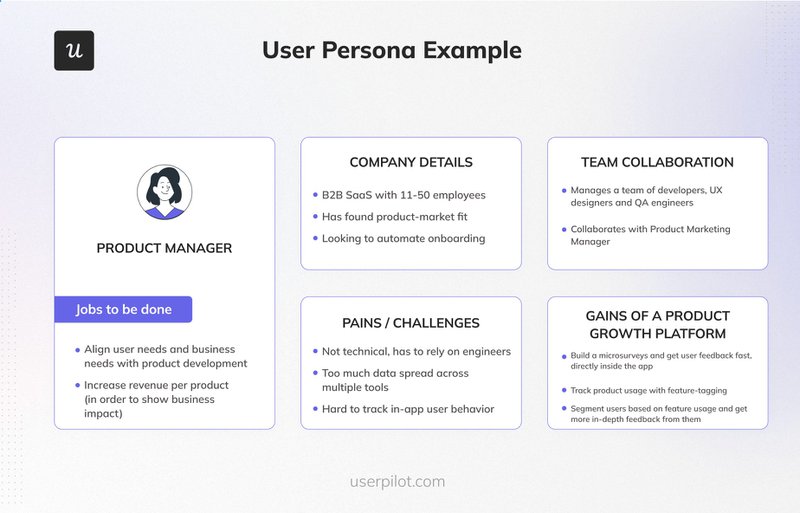
Example of a user persona.
Step 2: Set clear customer acquisition goals
Once you have a buyer persona and insights from real data, create clear acquisition goals such as lowering CAC by x %. Double the number of new customers acquired in a set period. This shows spending efficiency per user.
Also, track customer lifetime value (LTV), which is an estimate of average revenue per user times their expected customer lifetime. High LTV means existing customers generate ongoing value.
Step 3: Audit your current customer acquisition process
Use a combination of tools and methods to get a complete picture. Here’s what you can use:
Product analytics platforms
A robust product analytics platform is non-negotiable. It allows tracking user actions, building funnel analysis reports to see where users drop off, and performing path analysis to understand how users navigate your product.
Userpilot’s product analytics features, including custom analytics dashboards and Userpilot Paths, are central to this. You can track events with or without code using the raw events auto-capturing feature or the Visual Labeler, which gives us immediate insights into user behavior.
In-App surveys for qualitative data
Numbers tell what is happening, but surveys tell why it’s happening. Use in-app surveys to collect valuable customer feedback. NPS surveys help us gauge loyalty, while customer satisfaction surveys offer insights into specific experiences. Userpilot allows you to create and deploy these surveys easily, even offering score-based follow-up questions to dig deeper into feedback.
Session replay
Sometimes, data points aren’t enough. Watching actual user sessions through session replay allows you to see our product through your users’ eyes. This is invaluable for identifying friction points or understanding moments of confusion. Use it to validate bug reports and improve the overall user experience.
Use in-app guidance to offer contextual help, ensuring users can navigate our product with ease. This includes:
- Interactive user guides that walk users through complex tasks.
- Onboarding tooltips that explain features as users encounter them.
- Checklists that break down complex setups into simple, trackable steps. We can even localize our checklists to cater to a global audience.
These elements help reduce the learning curve and improve product adoption.
Step 4: Map the customer journey and select your customer acquisition channels
Map the customer journey by listing every step a user takes, from first hearing about you to signing up as a paying customer. Document and map every touchpoint from awareness to purchase, identifying friction points and optimization opportunities for the buyer’s persona.
For example, awareness might start with a social media post, then move to evaluating your site, and end with a trial sign-up.
Note friction, such as slow-loading pages that cause drop-offs, and then address them to smooth the path.
This helps control how potential customers find you, weigh options, and commit. Review real data from analytics to see common paths, like users coming from search engine optimization results and deciding after a demo.
Choose channels based on where your target customers spend time and your budget capacity. Pick customer acquisition channels that fit where your target audience hangs out and what we can afford. If they’re on LinkedIn, we use social media marketing.
For tight budgets, you can lean on content marketing or referrals from existing customers. Email marketing works great for follow-ups, while paid advertising or partnerships scale if you have more funds.
In PLG, you can focus on in-app experiences to draw users organically without heavy spending.
Step 5: Develop channel-specific customer acquisition strategies
Develop strategies for each customer acquisition channel by matching messaging to how users interact there. You can publish short videos on social media for quick tips, and for email marketing, you can send targeted newsletters with user stories as case studies.
See how Zoho ran SEM ads targeting task management searches. They highlighted free tools in the results, attracting users seeking quick solutions and making customer acquisition easier.
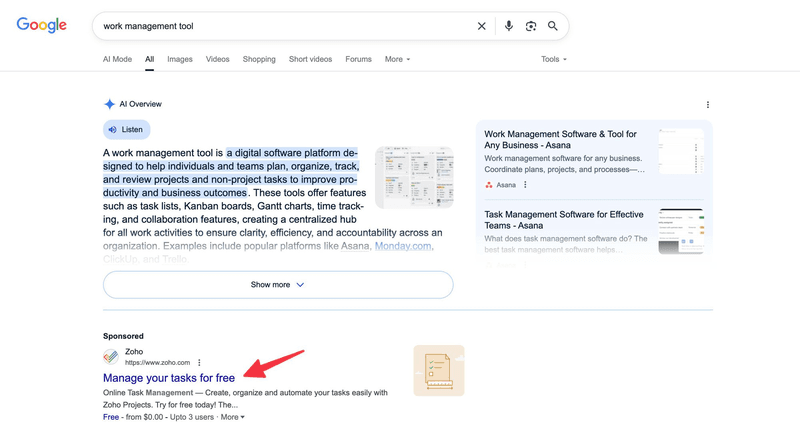
Step 6: Track your customer acquisition efforts
Set up proper measurement systems to track key metrics like CAC, conversion rates, attribution, and ROI by channel. Use analytics tools for real-time data on key metrics. This keeps your customer acquisition strategy focused.
Calculate customer acquisition cost (CAC) by dividing total marketing costs by the number of new customers acquired. Review this monthly to spot inefficiencies. A low CAC indicates effective spending on acquisition channels. Track conversion rates as the percentage of leads becoming paying customers. This highlights weak spots in your customer acquisition funnel.
Apply attribution models to identify which channels drive acquisitions and assign credit to touchpoints in the customer journey. This directs budget shifts to high-performing customer acquisition channels.
Measure ROI per channel by comparing revenue gained to costs spent. A positive ROI signals sustainable acquisition efforts. Tools like Userpilot’s dashboards make tracking straightforward without complex setups.
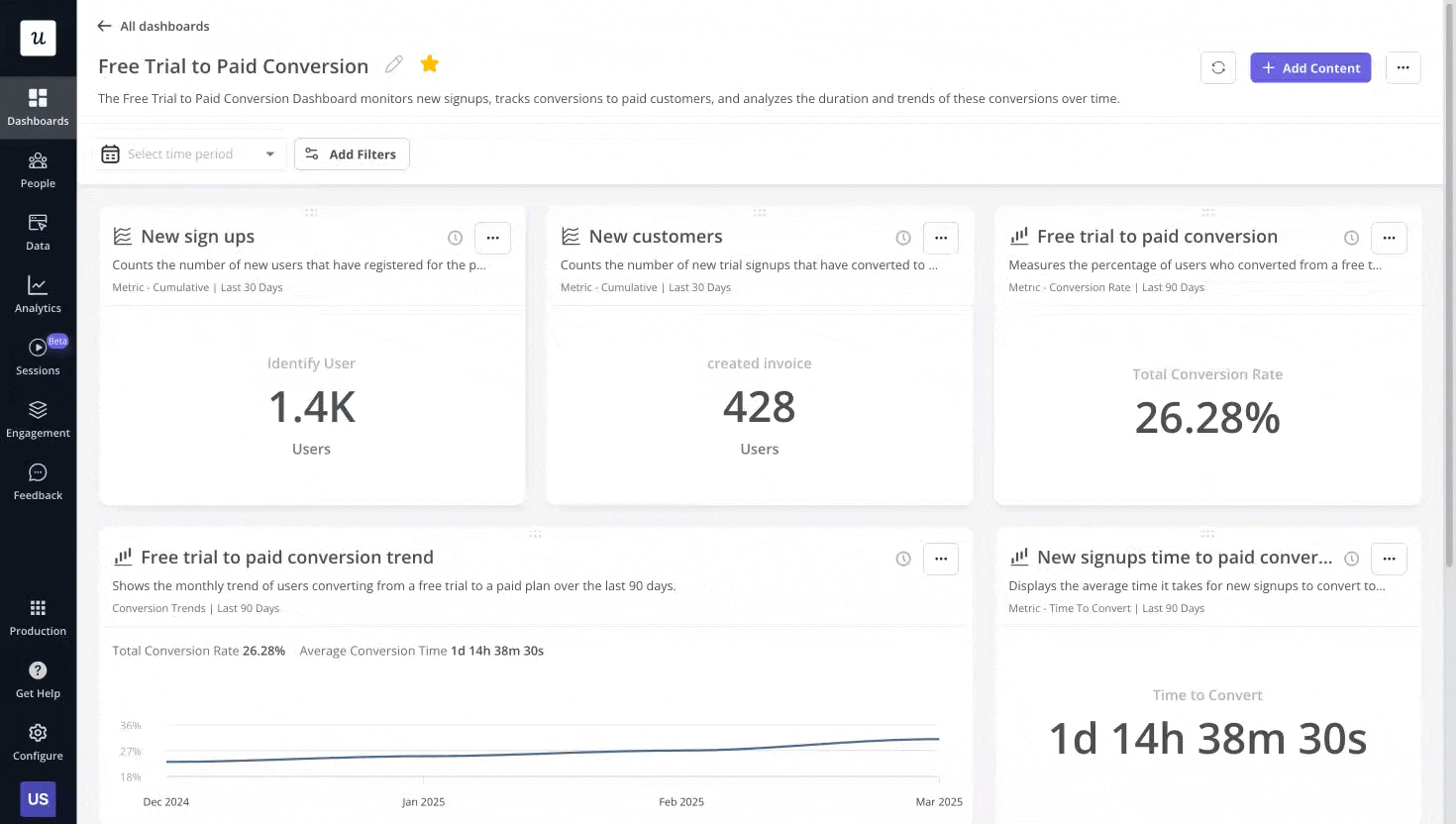
Gain clear insights this way. It refines your strategies for higher customer lifetime value. Avoid guesswork and make data-driven changes.
3 Successful customer acquisition strategies from SaaS companies
You can gain practical insights by studying real-world customer acquisition strategies from peer SaaS teams. The following three cases show how different channels, messaging, and experiments lowered customer acquisition cost and boosted conversion without heavy engineering input. Each example offers a clear, repeatable tactic.
Product-led growth with strong onboarding
Leading SaaS companies like Slack, Zoom, and Dropbox excel by letting their product do the selling. Great onboarding reduces CAC by helping new users quickly realize product value, right from within the product itself, using guided checklists, interactive walkthroughs, and tooltips that engage without interrupting.
Talana faced exactly this problem. They have several pages and unique URLs that change depending on the customer and the company. Onboarding users and managing all this using Intercom was not helpful. They switched to Userpilot, and managing all the customers, their onboarding, and in-app messaging became extremely easy.
We were able to do some great things in Intercom, but not as great as Userpilot in terms of the onboarding process. Regarding the in-app communications, I would say the impact is incredible. – María Ignacia Videla, Head of Communication and Content at Talana
Use in-app guidance to offer contextual help, ensuring users can navigate your product with ease. This includes:
- Interactive user guides that walk users through complex tasks.
- Onboarding tooltips that explain features as users encounter them.
- Checklists that break down complex setups into simple, trackable steps. We can even localize our checklists to cater to a global audience.
These elements help reduce the learning curve and improve product adoption.
Community building and events
I’ve seen how hosting events ties directly into community building. We host events to gather users in one spot, share real tips on product use, and spot common pain points firsthand. This builds trust and cuts customer churn by showing we listen. We treat events as live focus groups; real-time dialogue surfaces pain points faster than surveys alone.
Events matter because they turn passive users into active participants. This sparks ideas for your roadmap and encourages existing customers to invite peers, expanding your customer base organically.
Also, events foster community by connecting users, which benefits you through organic feedback loops that highlight friction in the customer journey and improve customer retention.
💡 Pro tip: If you’re struggling to grow your product in the AI era, I invite you to join our free live online conference. We will host experts from some of your favorite brands.
Customer acquisition via content marketing and search engine optimization
You can boost organic reach through content marketing and SEO. This involves creating relevant materials like blog posts or webinars to attract potential customers.
SEO optimizes your site with keywords and structure to rank higher in searches. Together, they drive traffic without high marketing costs.
Take our Userpilot blog as an example. As part of our digital marketing campaigns, we target product managers with guides on product-led growth, helping you address onboarding challenges directly.
Our blog uses a clean design for easy navigation, guiding you through the customer journey. Add social buttons to engage further.
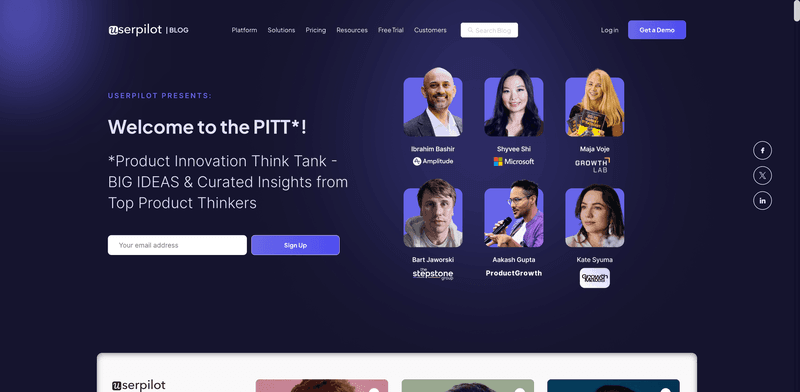
These customer acquisition strategies help with new customer acquisition and drive customer value while offering a great customer experience.
Start attracting potential customers, sustainably
Achieving sustainable customer acquisition demands consistent measurement, focused experiments, and quick product iterations. Align the core metric stack, CAC, activation, and LTV to expose hidden waste.
Re-route effort toward segments with clear profit potential. Replace wide-net tactics with targeted experiences that surface value in the first session. Reinforce it through contextual guidance and feedback loops.
Ready to improve customer acquisition efforts? Book a free demo with Userpilot and see how easy it is to drive success with the help of your existing user base.

